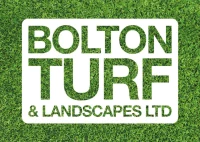A soakaway is a drainage solution that collects excess water and allows it to gradually disperse into the surrounding ground. It’s commonly used to deal with surface water from roofs, patios, lawns, or other areas prone to waterlogging. In well-drained soils, water naturally seeps away. But in clay soil, which holds water tightly and drains poorly, standing water can become a recurring problem. That’s where a properly designed soakaway becomes essential.
Clay soils are challenging because they drain slowly, or not at all without intervention. A standard soakaway pit often fails in clay unless you modify the design to account for the slow permeability of the ground.
Assessing Site Conditions and Drainage
Before you begin digging, it’s important to test the drainage rate of your soil. This can be done with a percolation test. Dig a test hole about 300mm wide and 300mm deep, fill it with water, and monitor how long it takes to drain. If the water sits for more than 24 hours, your clay is poorly draining, and a conventional soakaway won’t work without adaptations.
You should also check local regulations. Some UK councils restrict soakaways near buildings or boundaries, especially if you’re within flood-risk zones or using impermeable surfaces like tarmac or concrete.
Adapting the Soakaway Design for Clay Soil
Traditional soakaways rely on porous soil to allow water to disperse outward from a gravel-filled pit. In clay, this simply doesn’t happen efficiently. Instead, use modular soakaway crates or plastic cells designed to hold large volumes of water while slowing down its release. These crates provide structural support and create void space for water storage.
The key is to design a larger soakaway than you would for sandy or loamy soil, because water will take much longer to escape. Consider installing multiple crates linked together in a trench or wider pit to increase capacity.
Digging and Building the Soakaway
Choose a location at least 5 metres away from buildings and fences to avoid undermining foundations. Excavate a pit large enough to hold your soakaway crates, often 1 metre deep or more, depending on volume needs. In heavy clay, consider going wider rather than deeper, as the bottom of the pit may hold water longer than the sides.
Line the entire excavation with a geotextile membrane to prevent silt and soil from clogging the system. Once lined, install the plastic crates according to manufacturer instructions, then wrap the membrane over the top.
Backfill the pit with sharp sand or clean gravel to help improve water flow and protect the membrane. If the surface needs to remain level, top it off with soil and turf or gravel.
Connecting Drainage Pipes
If your soakaway is being used to drain surface water from downpipes or paved areas, connect a perforated drainage pipe leading into the crates. The pipe should be laid with a gentle fall to allow water to flow into the soakaway without pooling.
For very wet sites, you can also incorporate a French drain system, a gravel-filled trench with a perforated pipe that channels surface water into the soakaway over a larger area. This spreads out the load and helps prevent the soakaway from becoming overwhelmed during heavy rain.
Maintenance and Monitoring
A soakaway in clay soil needs periodic inspection to ensure it remains effective. Over time, silt or root ingress can reduce its performance. Install an access point or inspection chamber if possible so you can check the condition of the system.
Avoid planting deep-rooted trees or shrubs nearby, as roots may interfere with drainage pipes or the soakaway itself. If the system begins to fail or overflow, it may be necessary to extend it or improve the drainage leading into it.
Final Word
Building a soakaway in clay soil takes more planning and effort than in free-draining ground, but it can still be a highly effective solution to waterlogging. By adapting the design, increasing storage capacity, and installing proper drainage connections, you can create a system that protects your garden, foundations, and paths from persistent wet spots. With the right approach, even heavy clay soils can be managed to stay dry, stable, and healthy.


